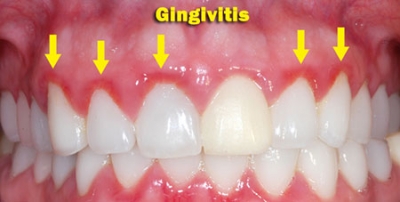
Gingivitis is a form of gum disease that happens when plaque, a naturally-occurring sticky film containing bacteria, builds up on teeth and causes the inflammation of the surrounding gum tissue. Plaque produces toxins that irritate the gums. This can cause the gums to become inflamed, making them red or puffy, or causing them to bleed. This harmful plaque bacteria can even lead to issues beyond gingivitis like weakened tooth enamel. Even with regular brushing, it’s important to make sure you’re taking care of your gum line, because a healthy mouth starts there.
There are two main categories of gingival diseases:
Dental plaque-induced gingival disease: This can be caused by plaque, systemic factors, medications, or malnutrition.
Non-plaque induced gingival lesions: This can be caused by a specific bacterium, virus, or fungus. It might also be caused by genetic factors, systemic conditions (including allergic reactions and certain illnesses), wounds, or reactions to foreign bodies, such as dentures. Sometimes, there is no specific cause.
The most common cause of gingivitis is the accumulation of bacterial plaque between and around the teeth. The plaque triggers an immune response, which, in turn, can eventually lead to the destruction of gingival, or gum, tissue. It may also, eventually, lead to further complications, including the loss of teeth.
Dental plaque is a biofilm that accumulates naturally on the teeth. It is usually formed by colonizing bacteria that are trying to stick to the smooth surface of a tooth.
Picture Credit : Google




